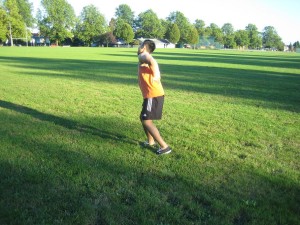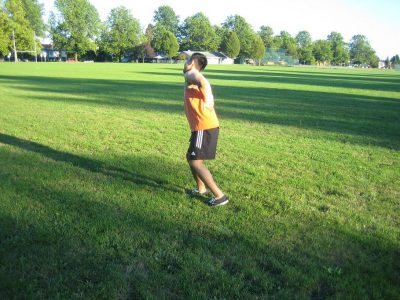Trochanteric bursitis is simply hip pain brought about by swelling of the bursa on the external border of the hip.
The bursa serves as a cushion between bone and soft tissue. It prevents bones from brushing against the muscles and tendons.
Trochanteric bursitis involves the exterior region of the femur at the edge of the hip. Engaging in repeated activities such as climbing stairs or hip surgery can trigger the inflammation of the bursa.
What are the signs?

The main sign of trochanteric bursitis is hip pain, usually on the outer region. The individual feels soreness if the outside of the hip is pressed or when lying on the side. The pain is aggravated by activities such as climbing stairs or walking. In some cases, the discomfort can radiate down the thigh.
Initially, the pain is piercing and later fade into an ache. In some cases, there is swelling in the affected leg.
What are the usual causes?
Some of the usual causes of trochanteric bursitis include:
- Injuries after a fall such as a direct strike to the hipbone or after lying on one side for prolonged periods of time
- Overuse from repeated activities such as cycling, running, climbing stairs or standing for long hours
- Ripped tendon
- Hip surgery or prosthetics in the hips
- Thyroid disease
- Spinal issues such as scoliosis or arthritis of the lumbar spine
- Arthritis such as gout and rheumatoid arthritis
- Bone spurs in the thighbone or hip
- Variances in the leg length
Management of trochanteric bursitis
Taking a break from the activity responsible for trochanteric bursitis will allow the hip enough time to recuperate.
Other measures to lessen the inflammation and pain include:
- Non-steroidal anti-inflammatory drugs (NSAIDs) – these drugs help reduces the pain and inflammation
- Steroid shots – the doctor might administer a shot of a corticosteroid to reduce the pain and inflammation
- Physical therapy – the physical therapist can guide the individual on exercises to maintain strength and flexibility of the hip. Other treatment modalities that can be used include ice or heat, massage and ultrasound
- Assistive devices – crutches or a cane is used to take the weight off the hip as it recuperates
Surgery
In case the conservative measures fail to work, the doctor will suggest surgical removal of the bursa.

